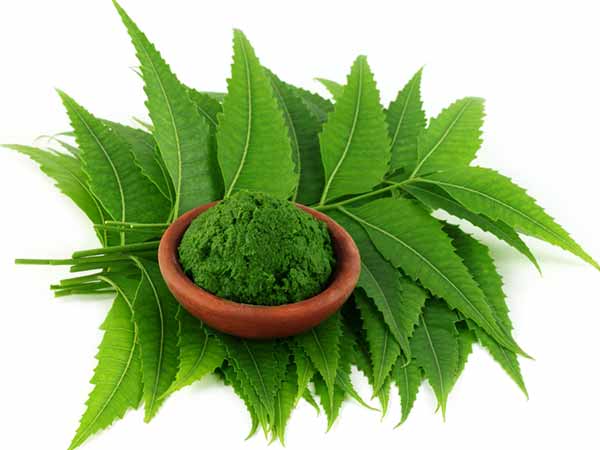Natural Home Remedies To Get Rid Of Dark Underarms
Are you in the need of restoring your underarm confidence? Worry not, because HNBT comes up with 13 amazing natural remedies to get rid of dark underarms in no time. Before revealing to you the remedies, allow us to first explain to you the causes behind this dilemma. Some of the main causes of dark underarms are regular shaving, excessive sweating, excessive skin, accumulation of dead skin cells, regular use of shaving creams and using alcohol-based deodorants. And sometimes, it can also be caused by certain medical conditions or hormonal disorders. Now without further ado, let us proceed to the list of home remedies for armpit whitening.
Lemons
It is the ultimate natural bleaching agent. You can use it to whiten any parts of the body, and that includes underarms too. Nevertheless, lemons are also good antiseptic agents, thus they get rid of odor from your underarms. All you have to do is just rub a slice of lemon against your armpit, and leave it on for about 10 minutes before rinsing. But however, bear in mind that lemons can dry out your skin. Therefore, we advise you to apply some moisturizer or body lotion afterwards.
Potatoes
Just like lemons, potatoes are bleaching agents too. But usually, potatoes are moisturizing and they rarely cause any skin irritations. They contain a mild portion of acid, which makes them beneficial for whitening purposes. You can either simply rub a slice of potato, or throw it into a blender and later squeeze the juice out to apply onto your underarms.
Cucumber
If you think cucumbers only get rid of dark circles, they actually get rid of dark underarms too! Rub a slice of cucumber daily on the affected area. This will bleach the skin, and keep I moist at the same time. You may also try this remedy along with some lemon juice or honey.
Saffron
Baking soda
It does wonders to your underarms. FYI, baking soda is also a natural bleaching agent. But it is usually milder and does not trigger any side effects when used on skin. To use it for your underarms, make a thick paste out of baking soda and some water. Apply it onto the affected area, and leave it to dry. Once it dries, rinse off with lukewarm water.
Orange peel
This sure is one yummy, fragrant remedy! The bleaching work is done by the citric acid found in orange peels. Dry some orange peels under the sun for about three to four days or until the peels are completely dried. Grind them until they turn into powder form and store it in a tight container. Take about two tablespoon of it and mix with some rose water to apply on your underarms. Leave it on for at least 10 minutes before washing off with cool water.
Milk
It has been said that milk is equally as effective as lemons when it come to whitening. This is because milk contains some vitamins and fatty acids that will help brighten up the tone of your skin. Simple apply some milk on your underarms and leave it on for about 15 minutes. Repeat this daily for best results.
Coconut oil
There’s nothing that coconut oil can’t do! After all, it is an universal remedy for health and beauty. This remedy involves a slow whitening process. So we suggest that you use this remedy everyday. Massage some coconut oil into the skin of your underarms for about 10 to 15 minutes before taking your bath. FYI, coconut is a natural deodorant.
Vinegar
This remedy effectively rids unpleasant odors and any dark spots found in your armpit. Rub some vinegar onto your underarms and leave it on for at least 10 minutes before rinsing off. For better results, you may try mixing some rice flour with decent portion of vinegar and then apply. It will help kill the bacteria and germs caused by excessive sweating.
Gram flour
Gram flour is an incredible way to whiten any part of your body, and armpit is no exception. It can also get rid of acnes when applied on face skin. I would personally encourage you to try this remedy as it is not only effective, but also safe to try. Make a paste out of some gram flour, lemon juice and yogurt ( you may also use fresh curd). Apply this onto your underarms daily and watch the magic happen!
Apples
Scrubbing your armpits with mashed apple can actually get rid of dark spots and odors too. Apple contains acidity to some extent and AHA which is capable of killing germs and bacteria that cause the darkening of your underarms. It is also a great way to exfoliate your skin. Now this adds another reason to why you should become an apple lover.
Yogurt
Where there’s the whitening, there’s the yogurt. Yogurt is highly beneficial for your skin, including that of underarms. Yogurt when applied on underarms, especially with a mixture of honey will rid impurities that have been causing skin discoloration. It can also neutralize the odor from your armpit area. For this trick, mix in a bowl two tablespoons of yogurt with one tablespoon of honey. Apply onto your underarms, and leave it to dry. Rinse off with cool water.
Sandalwood
Sandalwood is a great remedy to whiten dark underarms. It is also very fragrant and helps in eliminating body odors that are caused by excessive sweating. Now how do you use sandalwood for armpits? Mix together in a bowl two tablespoons of sandalwood powder and 1 tablespoon of rose water. Massage this into the skin of your armpit and leave it on for about 15 minutes. Then rinse with cool water like usual. For best results, practice this remedy daily.
Also read:: Best Home Remedies: For Bad Breath WHILE KISSING































